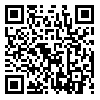Volume 13, Issue 3 (2011)
JAST 2011, 13(3): 425-430 |
Back to browse issues page
Download citation:
BibTeX | RIS | EndNote | Medlars | ProCite | Reference Manager | RefWorks
Send citation to:



BibTeX | RIS | EndNote | Medlars | ProCite | Reference Manager | RefWorks
Send citation to:
Valizadeh M, Mohayeji M, Yasinzadeh N, Nasrullazadeh S, Moghadam M. Genetic Diversity of Synthetic Alfalfa Generations and
Cultivars Using Tetrasomic Inherited Allozyme Markers. JAST 2011; 13 (3) :425-430
URL: http://jast.modares.ac.ir/article-23-10596-en.html
URL: http://jast.modares.ac.ir/article-23-10596-en.html
1- Department of Crop Production and Plant Breeding, Faculty of Agriculture, University of Tabriz, Islamic
Republic of Iran.
Abstract: (5426 Views)
Enzyme electrophoresis was used to measure genetic variation within, and divergence
among, three generations of recently bred synthetic alfalfa generations (Syn1, Syn2, and
Syn3) originating from a polycross of 12 selected parents and several cultivars. Three
isozyme loci, exhibiting tetrasomic inheritance in 10-day seedlings, were detected from five
enzymatic systems analyzed by polyacrylamide slab gel electrophoresis for about 100
individuals of each alfalfa population. Very high levels of heterozygosity (ranging from
0.521 to 0.699) were observed within alfalfa populations, using polymorphic loci. The
reduction in heterozygosity was about 5% from Syn1 to Syn2 and from Syn2 to Syn3. The
last open pollinated generation was found to be in W-H equilibrium as well as Gharayonja,
a native ecotype under examination, using c2-test. Application of Wright's Fstatistics
revealed that the estimated overall inbreeding coefficient, (FIT), of 9.4% was
mainly related to inbreeding or double reduction in alfalfa (FIS= 8.61%) rather than
random genetic drift or population differentiation (FST= 1.6%). Therefore, due to very
large intra-population diversity, the breeding program of the synthetic alfalfa did not
generate a large variety differentiation. However, the use of seedling allozymic loci can be
applied successfully for estimation of the population genetic parameters.
Received: 2011/01/20 | Accepted: 2011/01/20 | Published: 2011/01/20
| Rights and permissions | |
 |
This work is licensed under a Creative Commons Attribution-NonCommercial 4.0 International License. |







